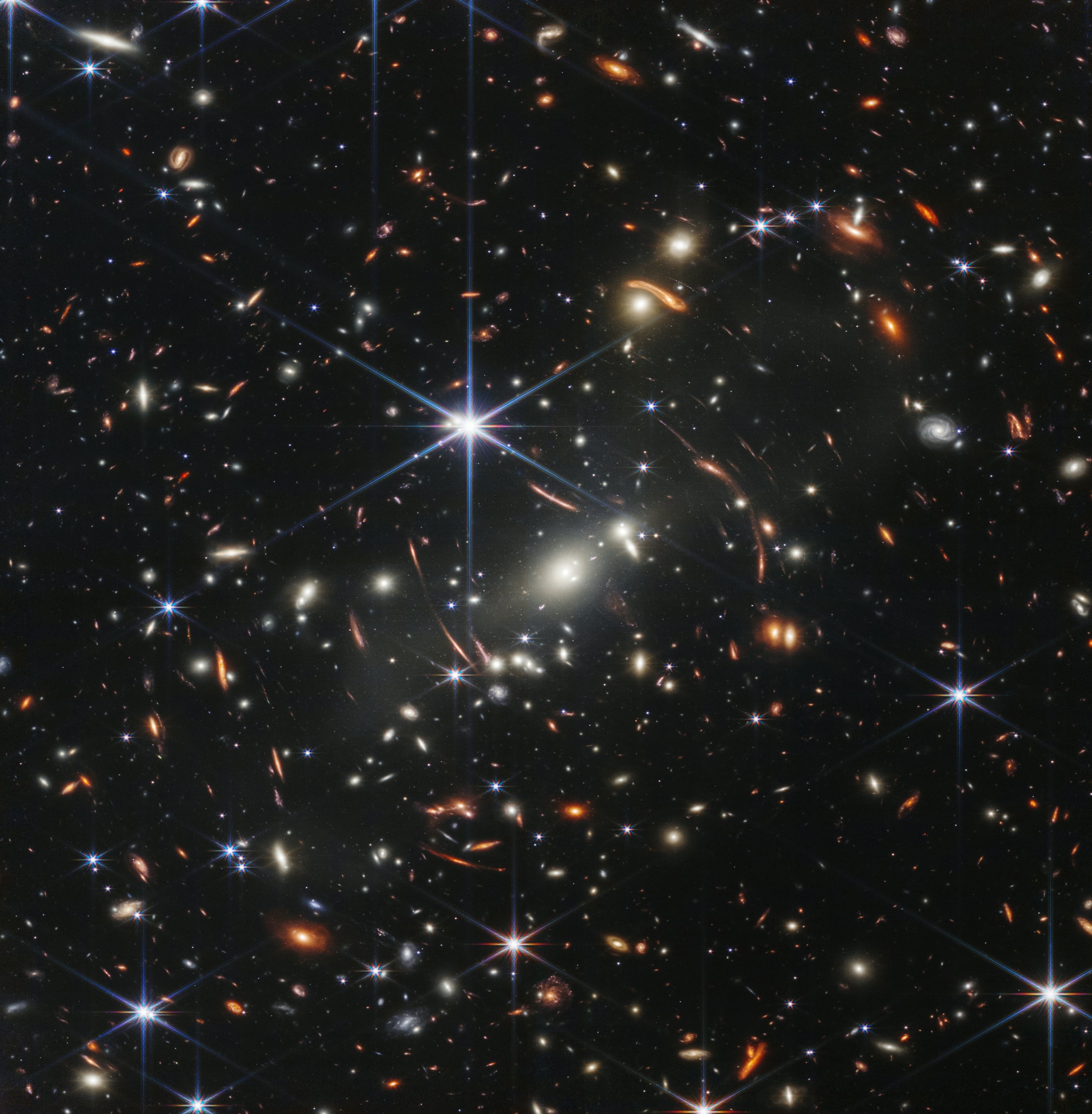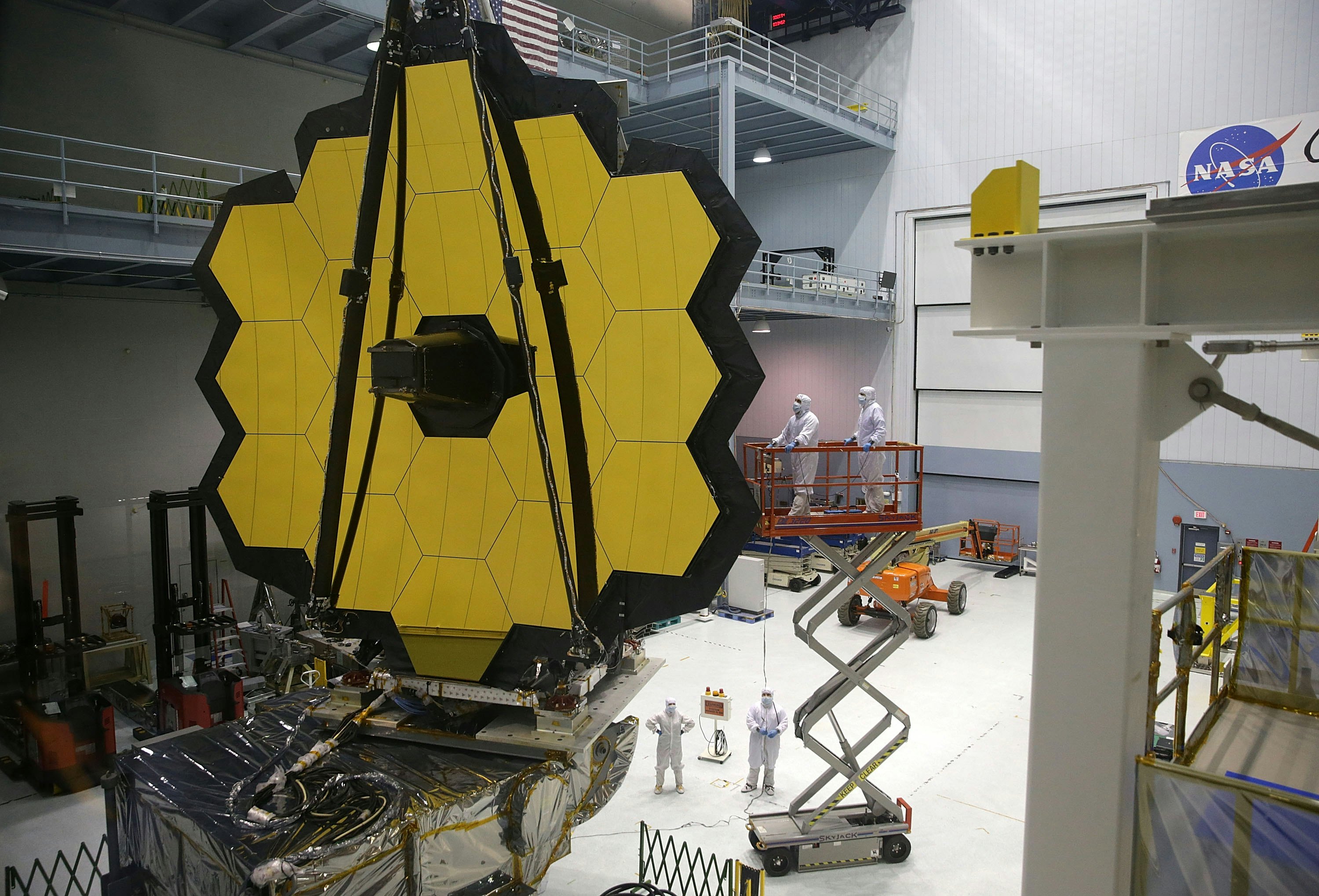Science
Related: About this forumWEBB TELESCOPE DISCOVERS AN "AMAZING" GALAXY FROM THE EDGE OF TIME
16 HOURS AGO
The JWST just broke another record that could reveal the “dark ages” of space.

IN A RECENT STUDY submitted to MNRAS, a collaborative research team utilized the first set of data from the James Webb Space Telescope (JWST), discovering a galaxy candidate, CEERS-93316, that formed approximately 250 million years after the Bing Bang, which also set a new redshift record of z = 16.7. This finding is extremely intriguing as it demonstrates the power of JWST, which only started sending back its first set of data a few weeks ago. CEERS stood for Cosmic Evolution Early Release Science Survey and was specifically created for imaging with JWST.
“The past few weeks have been surreal, watching all the records that stood for a long time with Hubble be broken by JWST,” says Dr. Rebecca Bowler, who is an Ernest Rutherford Fellow at the University of Manchester, and a co-author of the study. “Finding a z = 16.7 galaxy candidate is an amazing feeling — it wasn’t something we were expecting from the early data.”

The James Webb Space Telescope in 2016.Alex Wong/Getty Images News/Getty Images
This new study references a dozen previous studies that have measured objects up to redshifts z = 10 using a mixture of ground-based observations and with the Hubble Space Telescope and Spitzer Space Telescope.
“It’s amazing to have found such a distant galaxy candidate already with Webb, given that this is just the first set of data,” says Callum Donnan, a Ph.D. student at the University of Edinburgh and lead author of the study. “It is important to note that to be certain of the redshift, the galaxy will need to follow up observations using spectroscopy. This is why we refer to it as a galaxy candidate.”
More:
https://www.inverse.com/science/webb-telescope-farthest-galaxy-250-million-years-after-big-bang
OAITW r.2.0
(29,469 posts)The farther out I look, the shorter my mind bandwidth becomes.....
PJMcK
(23,336 posts)Humans can do great things.
We also really suck.
Have a nice week!
Frasier Balzov
(3,963 posts)some of those dot-sized galaxies must be really far away.
dweller
(25,794 posts)that could be printed on a T-shirt …
I want one
✌🏻
PoindexterOglethorpe
(27,312 posts)Thank you for posting. My Son The Astronomer often gives me distances by red-shift. So I sort of get it.
And a galaxy formed 250 years after the Big Bang is a very early galaxy. And none of those stars would still be around.
Igel
(36,586 posts)A galaxy 250 years post BB *would* be a very early galaxy!
If there were some red dwarfs in the mix, 0.2-0.3 solar masses, I'd expect them to be still kicking.
PoindexterOglethorpe
(27,312 posts)But even a galaxy formed 250 million years after the Big Bang was very early, and I'm pretty sure none of those stars are still around.
C Moon
(12,721 posts)but this kind of news always brings reality back around: I'm just a mammal living on a planet in a solar system with thousands of other solar systems out there. No ghosts.
Foolacious
(531 posts)That’s 1,000,000,000,000,000,000,000.
eppur_se_muova
(38,425 posts)The redshift is symbolized by z. The definition of z is
1 + z = lambda observed / lambda rest (actually, this is an approximate version)
z = 0.1. implies a 10% shift.
z = 1 implies a 100% shift.
so z = implies a 1000% shift ??
Actually, no. One must use the relativistic version:
https://wikimedia.org/api/rest_v1/media/math/render/svg/c30334b803cfb927650f90f3f866836c50514e53
so v= 0.9936 c, i.e. 99.36% of the speed of light